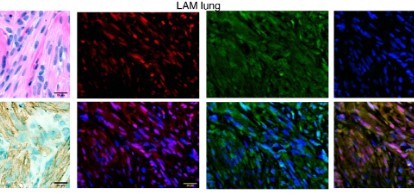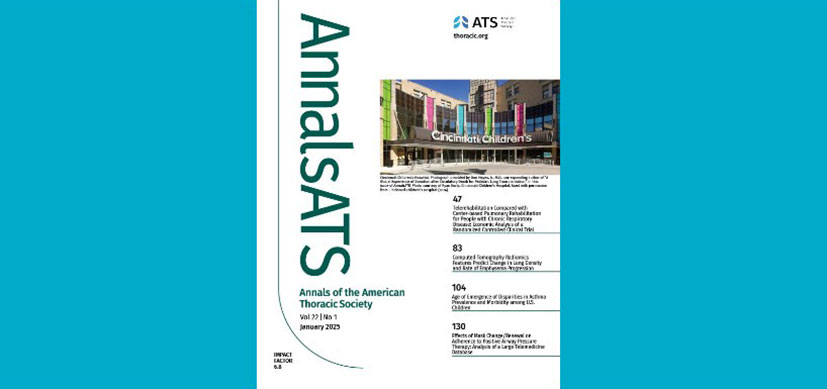Research Reveals Potential Therapy for LAM
Post Date: June 15, 2023 | Publish Date: May 10, 2023

A combination of single-cell RNA sequencing and single-nuclei ATAC-seq analysis has uncovered a potential treatment target for lymphangioleiomyomatosis (LAM), a rare cancer-like lung disease found in women of childbearing age.
The study reports finding a gene regulatory network that controls LAM cell survival. They also report that the compounds fludarabine and HXR9 show promise, based on tests in mouse models and human cells in culture, as potential treatments to slow or stop growth of LAM cells.
Detailed findings were published online May 10, 2023, in Science Advances.
The study was led by four co-first authors: Aristotelis Astrinidis, Tasnim Olatoke, and Erik Zhang, all with the Department of Internal Medicine at the University of Cincinnati; and Andrew Wagner, with the Perinatal Institute at Cincinnati Children’s.
Corresponding authors were Yan Xu, PhD, Perinatal Institute, and Jane Yu, PhD, with the UC Division of Pulmonary, Critical Care and Sleep Medicine.
Contributing co-authors included Minzhe Guo, PhD, Kathryn Wikenheiser-Brokamp, MD, PhD, and Jeffrey Whitsett, MD, from Cincinnati Children’s; Alan Zhang, Ushodaya Mattam, Elizabeth Kopras, Nishant Gupta, Eric Smith, and Francis McCormack from UC; and two scientists from Texas Tech University.
“We identified a novel pathway that is dysregulated in LAM,” Olatoke says. “We found two drugs that target this pathway. We are examining both of those drugs to see how we can use them to reduce the progression of LAM.”
Read more in the UC announcement
| Original title: | Single-cell multiomic analysis identifies a HOX-PBX gene network regulating the survival of lymphangioleiomyomatosis cells |
| Published in: | Science Advances |
| Publish date: | May 10, 2023 |







